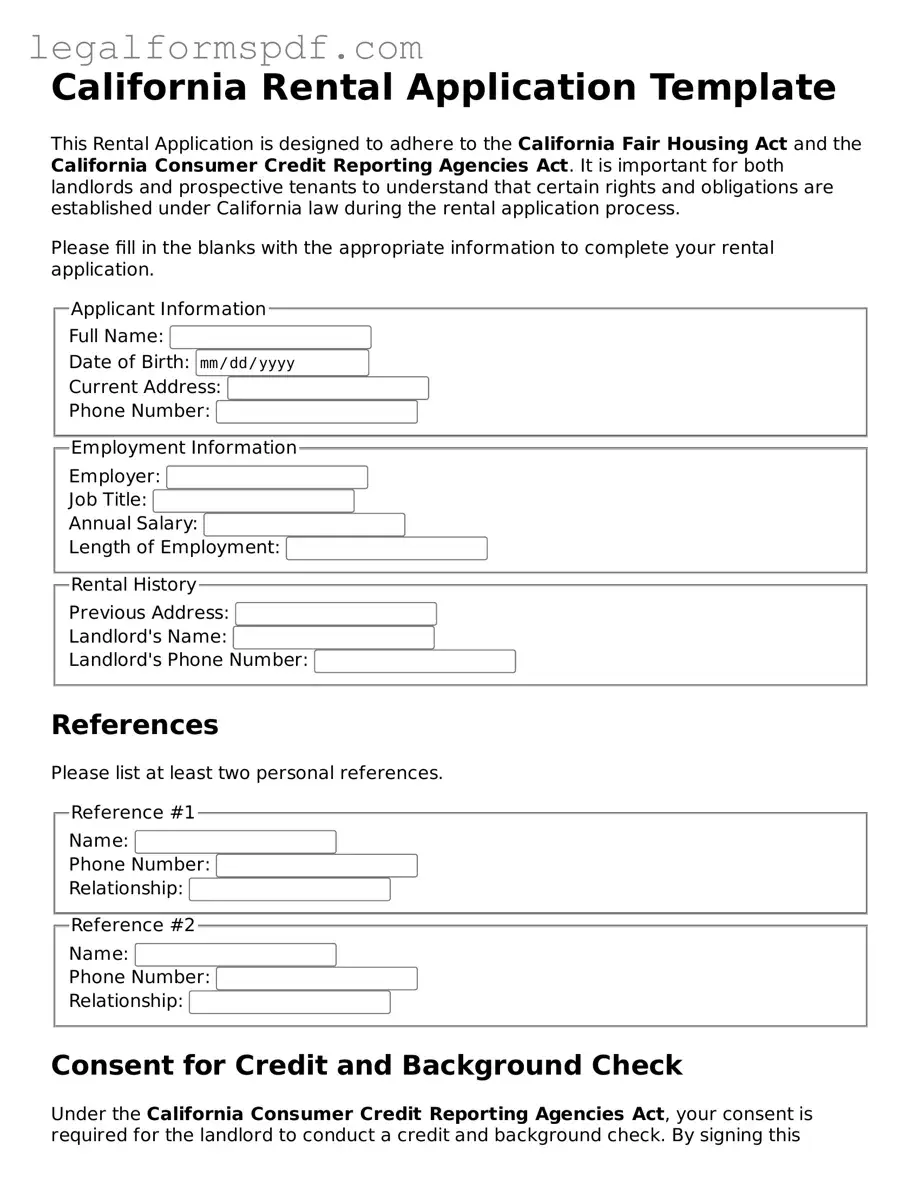What is the purpose of a California Rental Application form?
A California Rental Application form is a document used by landlords and property managers to gather information from potential tenants. This form helps in assessing whether an applicant is a suitable tenant for their rental property. It typically requests personal, employment, and financial information, including rental history, to carry out a comprehensive background check. This process is crucial in selecting tenants who are likely to be responsible and reliable.
Is there a fee to submit a California Rental Application?
Yes, in most cases, landlords and property managers charge a fee to process a rental application in California. This fee covers the cost of running credit and background checks on applicants. The amount can vary, but California law caps the application screening fee landlords can charge, and this cap can change annually based on inflation rates. It's important for applicants to make sure the fee requested is within legal limits and to inquire about the possibility of a fee reduction or waiver if the cost presents a financial hardship.
What information do I need to provide on a California Rental Application?
Applicants are generally required to provide a range of information on a California Rental Application, including full legal name, current and past addresses, employment history, income details, and references. Landlords may also request your social security number for a credit check and a driver's license or government-issued ID to verify identity. Being prepared with this information can expedite the application process.
How long does it take to process a California Rental Application?
The processing time for a California Rental Application can vary depending on several factors, including the landlord or property manager's schedule, the thoroughness of the background and credit checks, and how quickly references respond. Typically, it takes anywhere from a few days to a week. Applicants can speed up the process by ensuring their application is complete and accurate and by alerting their references that they might be contacted.
Can a landlord reject my application based on my credit history in California?
Yes, a landlord in California can legally reject a rental application based on the applicant's credit history. However, they must follow federal and state laws governing housing and credit reporting, including providing a notice that specifies the credit reporting agency's information if the rejection was based wholly or partly on any information obtained from a credit report. Landlords are also required to provide a reason for the rejection upon request.
What are my rights if my rental application is denied in California?
If your rental application is denied in California, you have several rights designed to protect you. The landlord must provide you with a written notice of the denial and the reason for it if you request it. This can help you address any issues before applying elsewhere. Furthermore, if the denial is based on your credit report, you are entitled to a copy of the report and have the right to dispute any inaccuracies contained in it with the credit reporting agency. It's also important to know that laws prohibiting discrimination based on race, color, religion, sex, national origin, familial status, disability, or any other protected class, apply throughout the rental application process.
